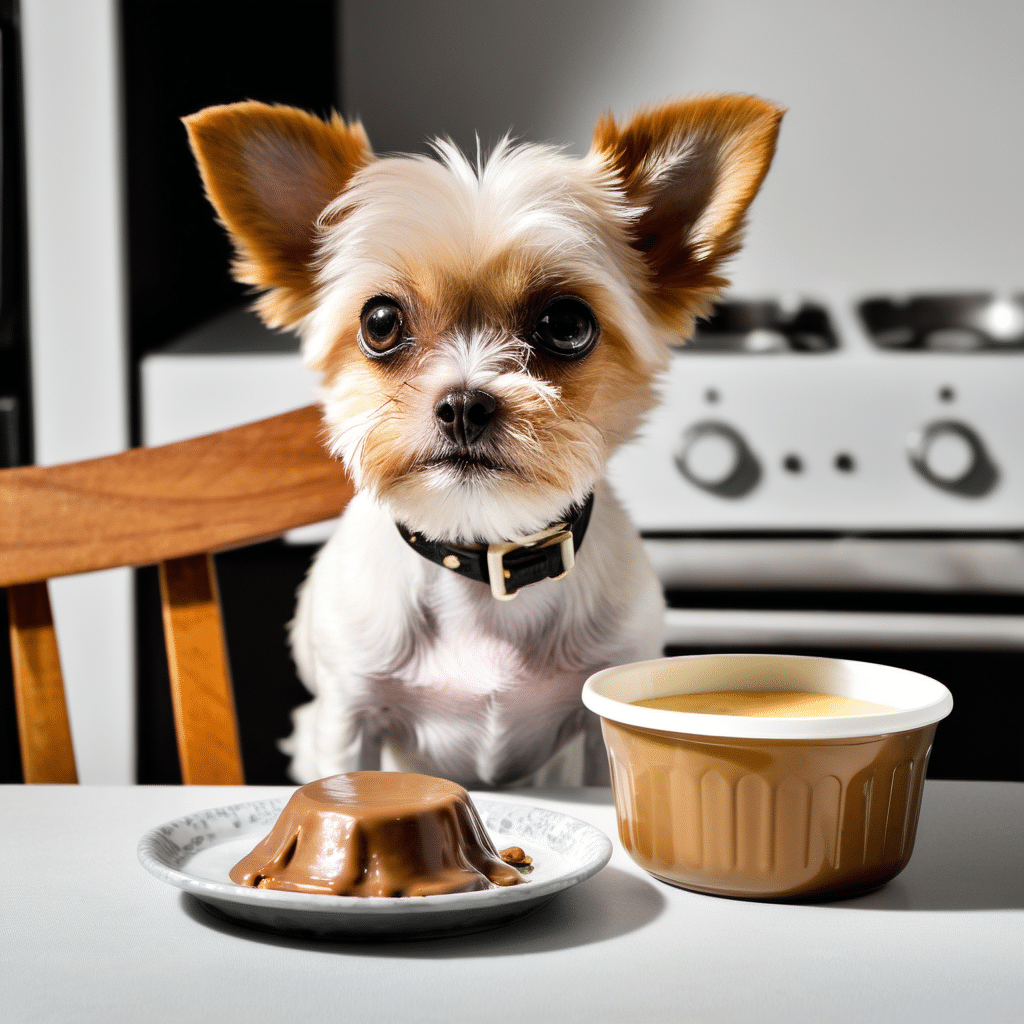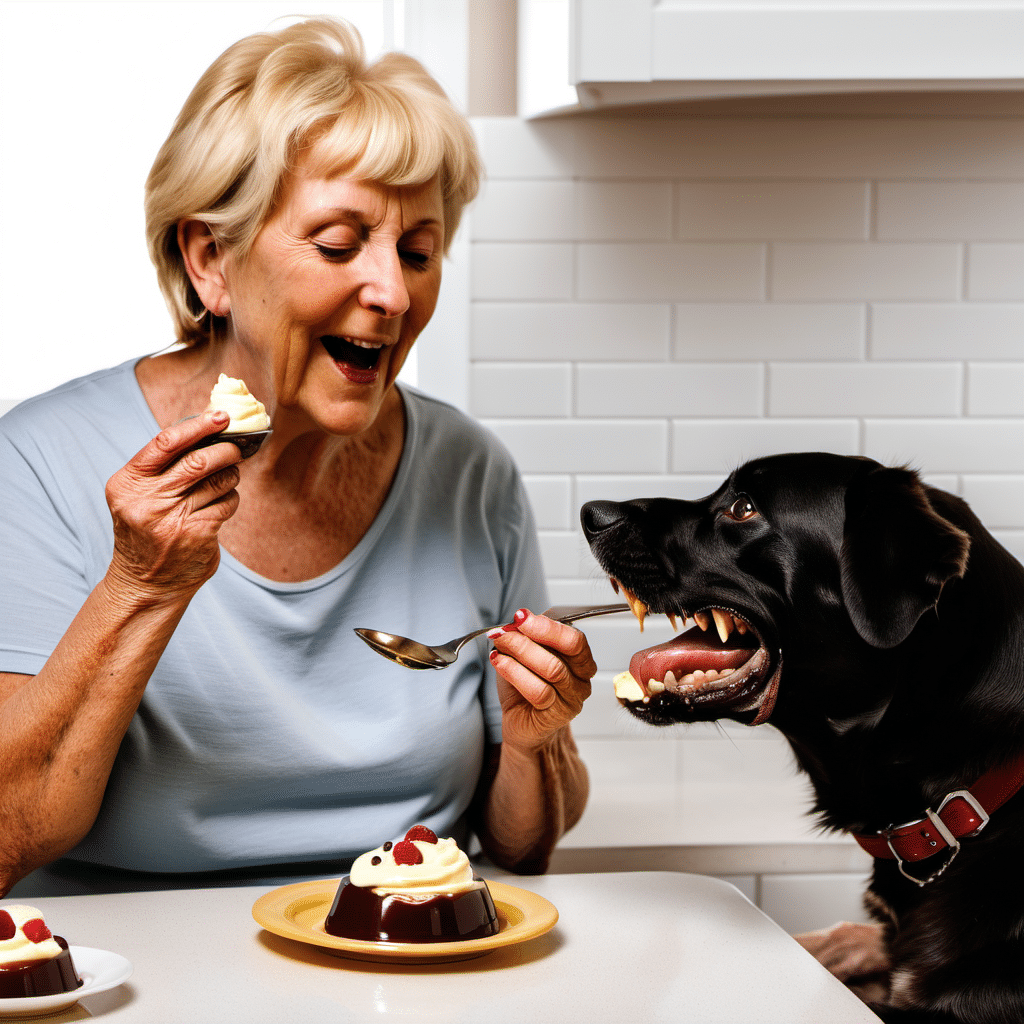
Ever find yourself enjoying a delicious bowl of pudding and notice your dog giving you those big, pleading eyes? It’s a common scenario for pet owners, and it begs the question: Can dogs eat pudding?
The quick answer is, it depends. While most dogs might drool over the idea of a sweet treat, not all puddings are safe for our furry friends. Ingredients like chocolate and artificial sweeteners are big no-nos, posing serious health risks.
On the flip side, there are some types of pudding, like those specifically made without harmful ingredients, that can be considered as an occasional treat. It’s all about knowing what’s inside that dessert cup.
So, let’s dive into the do’s and don’ts of sharing pudding with your dog. Keeping your pup’s diet and health in mind is crucial before letting them indulge in any human treats.
Understanding Pudding Ingredients
Before letting your dog lick that spoon, it’s essential to understand what goes into making pudding and how it affects your dog’s health. Not all ingredients are dog-friendly, and some can even be dangerous.
Key Ingredients to Avoid
- Chocolate: It’s well-known that chocolate is toxic to dogs, leading to serious health issues like liver failure and even death. Chocolate pudding is a definite no for your dog.
- Artificial Sweeteners: Xylitol, a common sweetener in sugar-free puddings, can cause insulin release in most dogs, leading to hypoglycemia. This is a condition that can be life-threatening.
- High Fat Content: Rich, creamy puddings might taste great to us, but their high fat content can lead to pancreatitis in dogs. Symptoms include vomiting, diarrhea, and abdominal pain.
- Excessive Salt and Sugar: Dogs don’t need all the sugar and salt that humans consume. Too much can lead to an upset stomach, obesity, and other health issues.
Safer Ingredients for Dogs
- Plain, Cooked Pumpkin: A great source of fiber and nutrients for dogs, plain pumpkin (not pumpkin pie filling) can be a healthy addition to homemade dog pudding recipes.
- Peanut Butter (Xylitol-free): Peanut butter is a favorite treat for many dogs. Just make sure it’s free from xylitol and not too high in sugar.
- Yogurt: Plain, unsweetened yogurt is a good source of calcium and probiotics for dogs. However, make sure your dog isn’t lactose intolerant before feeding it to them.
- Fruits and Vegetables: Many fruits and veggies, like apples (without seeds) and carrots, can be healthy, low-calorie treats for dogs. They can be pureed and added to homemade puddings for an extra health boost.
By being mindful of the ingredients in pudding, you can ensure that your treat doesn’t turn into a trip to the vet. Always opt for dog-safe alternatives when looking to share a sweet moment with your furry friend.

The Scoop on Dogs and Black Pudding
Black pudding might be a staple in human breakfasts, but when it comes to sharing this savory treat with your dog, there are a few things to consider. Let’s break down whether this type of pudding is suitable for your canine companion.
Can Dogs Eat Black Pudding?
- Ingredients Matter: Black pudding typically contains animal blood, fat, and oatmeal, along with herbs and spices. While none of these are inherently toxic to dogs, the spices and too much salt can be problematic.
- Cooked vs. Raw Black Pudding: Dogs eat black pudding in both cooked and raw forms, but raw foods carry a risk of bacteria like salmonella. Cooked black pudding is safer, though it should still be given in moderation due to its fat content.
- Moderation is Key: Given its high fat content, black pudding should only be an occasional treat. Too much can lead to weight gain or digestive issues in dogs.
Healthier Alternatives to Traditional Black Pudding
- Dog-Safe Black Pudding Recipes: You can find or create black pudding recipes tailored for dogs, focusing on reducing fat and salt content. These recipes might use lean meats, dog food-grade blood meal, and dog-friendly grains.
- Black Pudding Sticks for Dogs: Some pet stores sell black pudding sticks made specifically for dogs. These are usually formulated to be healthier than the human version, with fewer spices and salt.
- Fried Black Pudding: While fried black pudding is a delicious breakfast side for humans, the added fats make it even less suitable for dogs. Stick to plain, cooked versions if you decide to treat your dog.
While dogs can eat black pudding in very small amounts, it’s not the best treat choice due to its high fat and salt content. If you want to share this delicacy with your pet, look for dog-specific products or recipes that cater to their dietary needs, ensuring they get a healthy treat without the risks. Always prioritize a balanced diet for your dog, and when in doubt, opt for safer, more nutritious snacks.
Integrating Treats into Your Dog’s Diet
Treats can be a fun and rewarding part of your dog’s diet, but it’s important to balance them with their overall nutritional needs. Let’s look at how to incorporate treats like pudding into a healthy diet for your dog, ensuring they get the nutrients they need without the unnecessary extras.
The Importance of a Balanced Diet
- Nutritional Balance: A dog’s diet should primarily consist of high-quality dog food that meets all their nutritional requirements. Treats, including homemade or specially prepared puddings, should only make up a small percentage of their daily intake to maintain a healthy diet.
- Cooked Breakfast for Dogs?: While a cooked breakfast may seem like a nice treat for your dog, remember that foods prepared for humans often contain ingredients and levels of fat and salt that are not ideal for dogs. If you want to share your breakfast, opt for plain, cooked proteins like eggs or unsalted meats, and raw vegetables.
Safe Treat Options
- Raw Vegetables: Many raw vegetables can be a healthy addition to your dog’s diet, offering vitamins, minerals, and fiber. Carrots, cucumbers, and green beans are great choices that most dogs love.
- Homemade Dog Treats: Preparing homemade treats gives you control over the ingredients, allowing you to avoid unhealthy additives. Use dog-friendly ingredients to create low-fat, low-salt snacks that complement their regular meals.
- Special Occasions: Treats should be given sparingly and as part of training or special occasions. This helps prevent weight gain and ensures that your dog values them as a special reward.
Monitoring Treat Consumption
- Keep Track of Treats: It’s easy to overdo treats without realizing it. They should not exceed 10% of your dog’s total daily calorie intake. Monitoring what and how much you’re feeding outside of their regular meals can help maintain a healthy diet.
- Adjust Meals Accordingly: If you’ve given your dog a treat, especially something as rich as pudding, consider adjusting their regular meals to account for the extra calories. This can help prevent obesity and related health issues.
Treats can be a healthy part of your dog’s diet when chosen wisely and given in moderation. Whether it’s a slice of cooked breakfast or a small serving of dog-friendly pudding, always consider the nutritional impact on your dog’s overall diet. By focusing on a balance of nutrients and monitoring treat intake, you can ensure your furry friend stays happy, healthy, and well-fed.

Conclusion: Can Dogs Eat Pudding
Navigating the world of human foods for dogs can be tricky, especially when it comes to sweet treats like pudding. We’ve explored the dos and don’ts, the potential risks, and how to safely include treats in your dog’s diet. Remember, while it’s tempting to share our favorite snacks with our furry friends, their health and nutritional needs are quite different from ours.
Key Takeaways
- Moderation is Essential: Whether it’s black pudding or a dog-friendly pudding recipe, treats should be given sparingly and never replace a balanced diet.
- Ingredients Matter: Always check the ingredients for anything potentially harmful to dogs, such as chocolate, excessive salt, or artificial sweeteners.
- Opt for Healthy Alternatives: There are plenty of dog-safe recipes and commercial treats that can satisfy your dog’s sweet tooth without risking their health.
- Consult Your Vet: If you’re ever unsure about feeding your dog a new food, your vet can provide guidance based on the latest research and your dog’s specific health needs.
As pet owners, we love to spoil our dogs, but it’s important to do so in a way that doesn’t compromise their health. By choosing the right treats and keeping an eye on their diet, we can ensure our dogs enjoy a long, happy, and healthy life by our sides.
So next time you’re indulging in a pudding, consider whether it’s suitable for your dog or if a healthier dog-specific treat might be a better option.